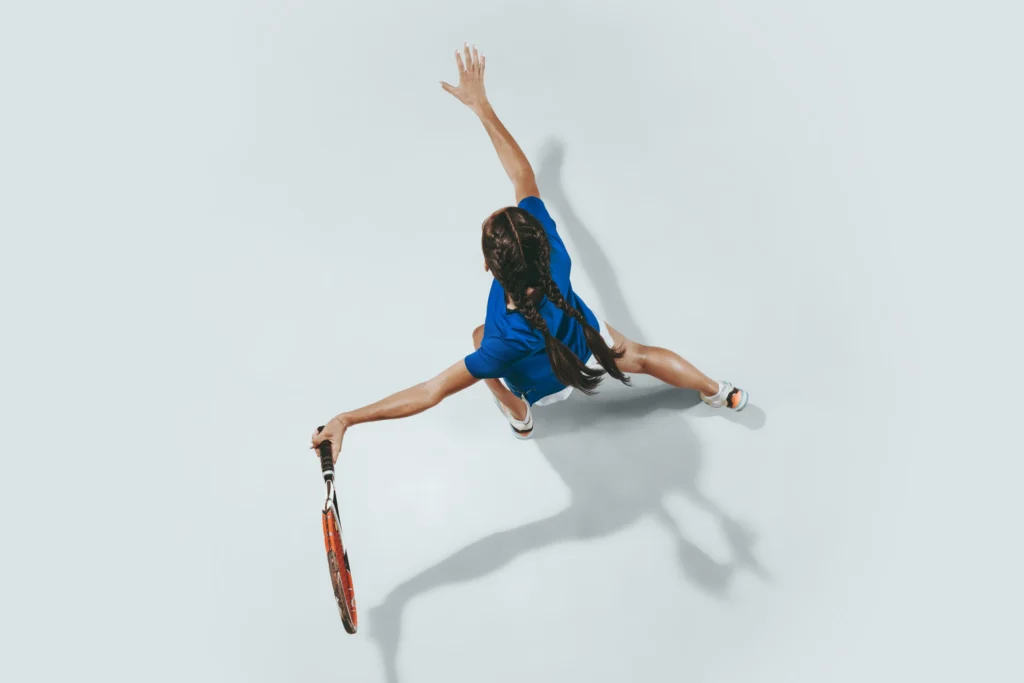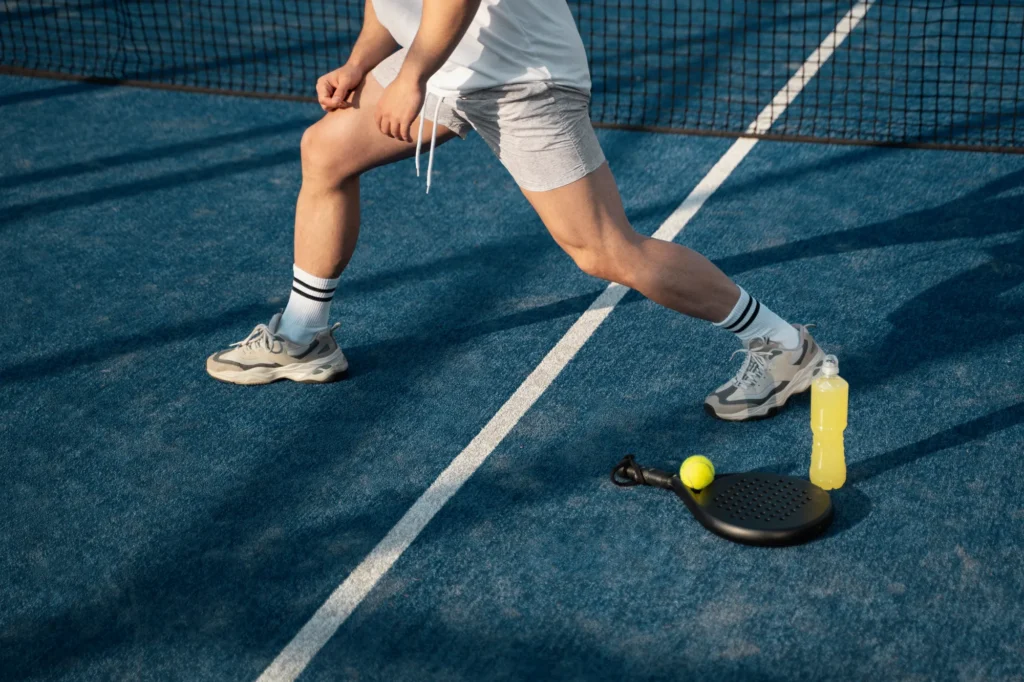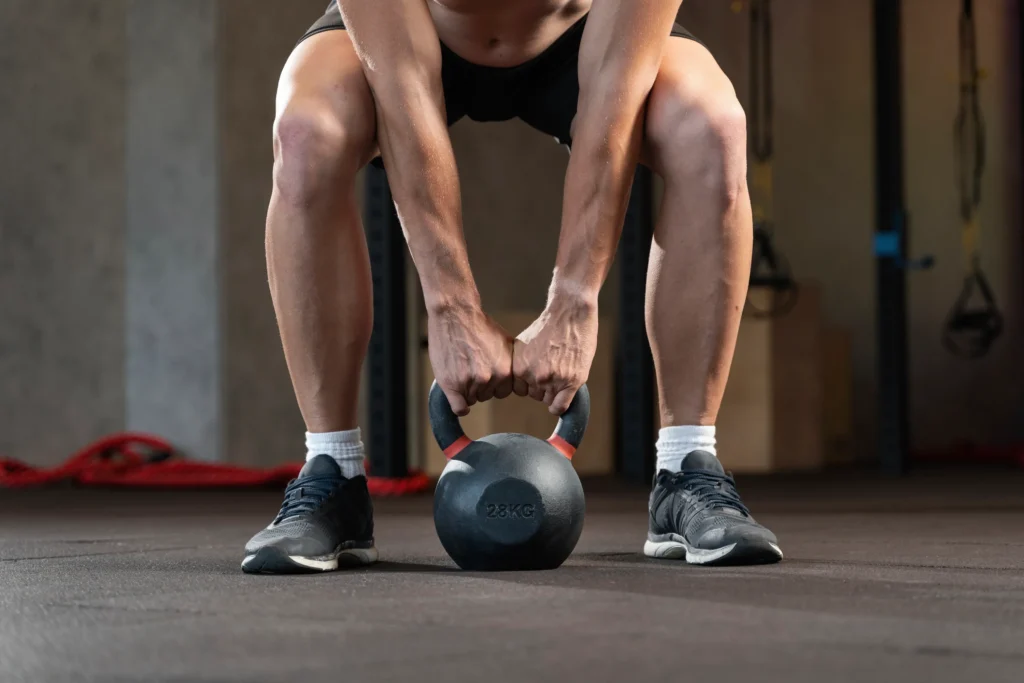Power Your Game: Strength and Performance in Padel
- Benefits of Strength Training for Padel Players
- Importance of Strength Training in Padel
- Main Benefits of Strength Training for Padel Players
- Basic Principles of Strength Training for Padel
- Training Progression
Benefits of Strength Training for Padel Players
If you’ve made it this far, you’ll already know that padel is a sport that has experienced exponential growth in popularity in recent years. More and more people are taking to the courts to enjoy this exciting sport. However, for those looking to take their game to the next level, strength training has become an essential component. From Los Naranjos Padel club we want to show you the multiple benefits of strength training for padel players like you who want to integrate certain exercises into their routine to improve their level of play.
Importance of Strength Training in Padel
Strength training is not only beneficial, it is crucial for any padel player who wants to improve their performance. Muscular strength not only allows you to hit the ball with more power, but also improves endurance and stability on the court. A padel player who spends time in the gym will see a noticeable difference in his or his/her game. The comparison between players who train strength and those who do not is obvious: the former are better able to maintain a high level of performance throughout the match, also reducing the risk of injury.

Main Benefits of Strength Training for Padel Players
Increased Striking Power
Strength training allows padel players to develop more power in their strokes. Exercises such as bench presses and pull-ups strengthen the upper body, facilitating stronger and more accurate strokes. At our gym in Marbella, trainers can design specific routines to help maximise this power.
Improving Muscular Endurance
Maintaining consistent performance during long matches is essential in padel. Exercises such as squats and deadlifts improve muscular endurance, allowing players to maintain their energy level and effectiveness throughout the game.
Injury Prevention

Strengthening muscles and joints through strength training significantly reduces the risk of common padel injuries. Specific exercises such as lunges, also known as strides, and Russian twists, when performed correctly, help protect the body from strains and overloads, keeping players on the court and out of the physiotherapy room.
Improved Speed and Agility
Strength training not only increases power and endurance, but also plays a crucial role in improving a padel player’s speed and agility. These qualities are essential for dominating the court, allowing players to react quickly to their opponents’ shots and change direction effectively. Here we explore how strength training contributes to these aspects of the game.
Explosive Force Enhancement
Explosive strength is the ability to generate maximum force in the shortest possible time. Exercises such as box jumps and Olympic lifts (also known as ‘clean and jerk, snatch’) are excellent for developing this skill. By incorporating these exercises into their gym routine, padel players can improve their ability to perform explosive movements such as short sprints and jumps to reach the ball.
Improvement of Coordination and Balance
Strength training also improves coordination and balance, which are essential for quick and precise movements on the track. Exercises that challenge balance, such as single-leg squats and side planks, help strengthen stabiliser muscles. These exercises are especially useful for improving agility, as they allow players to maintain control of their body during quick movements and changes of direction.
Optimisation of Running Technique
Strength exercises that focus on the posterior chain of the body (glutes, hamstrings and lower back) improve running technique and movement efficiency. Deadlifts and kettlebell swing variations are excellent for developing these muscles, allowing padel players to move faster and more efficiently on the court. Optimised running technique reduces reaction time and improves overall speed.
Agility in changes of direction
Padel is a sport that requires constant and rapid changes of direction. Strength exercises that incorporate lateral movements, such as lateral jumps and lateral lunges, are particularly effective in improving this skill. These exercises strengthen the leg and hip muscles, allowing for quicker and smoother changes of direction without losing balance or speed.
Combined Training Programmes
To maximise speed and agility benefits, it is useful to combine strength training with specific agility exercises. Circuits that include sprints, jumps and changes of direction can be incorporated into the strength routine. At our gym in Marbella we have specialised trainers who offer combined programmes that are tailored to the individual needs of each padel player, ensuring a comprehensive improvement in performance.
In short, strength training is essential for any padel player who wants to improve their speed and agility. By integrating specific exercises into their gym routine, players can achieve faster movements, more efficient direction changes and better coordination on court, thus raising their level of play.

Basic Principles of Strength Training for Padel
Types of Exercises
Strength training for padel players should include both compound exercises and isolated exercises. Compound exercises, such as squats, deadlifts and bench presses, work multiple muscle groups at the same time, which improves coordination and overall strength. On the other hand, isolated exercises, such as biceps curls and leg extensions, focus on specific muscles, allowing you to correct imbalances and strengthen particular areas.
Frequency and Duration
For best results, strength training is recommended at least two to three times a week. Each session should last between 45 and 60 minutes, including a proper warm-up and stretching at the end. At Los Naranjos Padel Club we offer personalised programmes that adapt to the needs and schedules of each player, ensuring that the training is effective and safe.
Training Progression
It is crucial to increase the load and intensity of exercises gradually to avoid injury and promote muscle growth. Players should focus on increasing the weight lifted, number of repetitions or complexity of exercises as they get stronger. Our coaches will help you set realistic goals and follow an appropriate progression programme.
